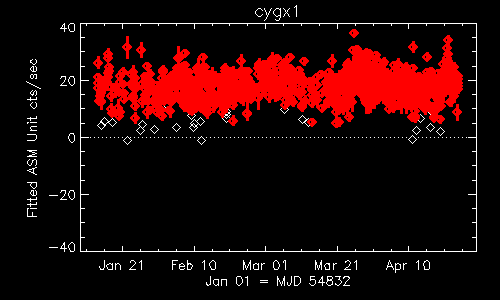
This site provides spectral energy distributions (SEDs) of X-ray
binaries from radio
to
X-ray energy range as a function
of binary type (BH, NS, HMXB, LMXB), orbital phase, superorbital phase, and
aperiodic X-ray
spectral states. Superorbital phase and X-ray spectral states
are determined using
RXTE ASM lightcurves of the individual sources.
X-ray binaries (XRBs) owe their prominence to one of the most
efficient energy release
mechanisms known: accretion onto a compact object.
Accretion processes are ubiquitous in the Universe and
are associated with
star formation, interacting main sequence binaries,
active galactic nuclei, and quasars.
XRBs are the most nearby, easily
studied example of the accretion process. They are of additional
interest as
the endpoints of stellar evolution and serve as laboratories for the
study of matter under extreme conditions.
What are X-ray Binaries?
A brief definition of X-ray Binaries
Why Spectral Energy Distributions (SEDs)?
The need for SEDs
X-ray Spectral States
RXTE
Instruments of Interest



